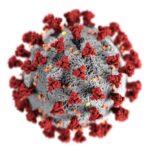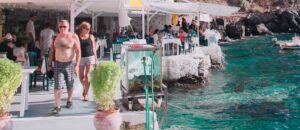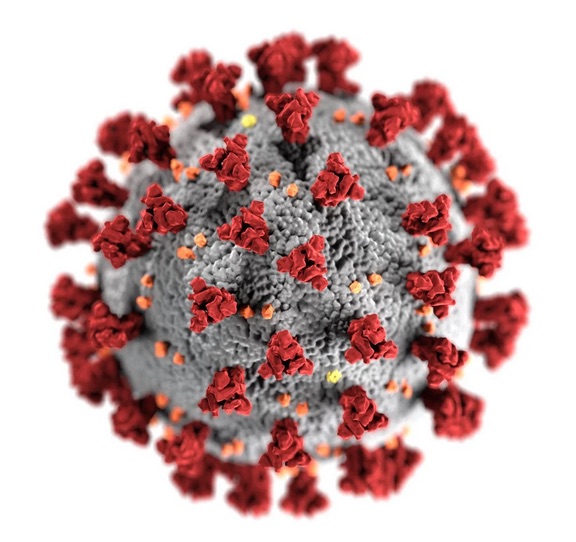 Prime Minister Scott Morrison has hinted at trans-Tasman flights between Covid-free areas of Australia and New Zealand; Melbourne is to spend another three weeks in lockdown – and Europe’s approach to the coronavirus appears suddenly to be changing.
Prime Minister Scott Morrison has hinted at trans-Tasman flights between Covid-free areas of Australia and New Zealand; Melbourne is to spend another three weeks in lockdown – and Europe’s approach to the coronavirus appears suddenly to be changing.
The end of many people’s worst-ever year is in sight. The Australian government plans to make free vaccinations for Covid-19 available throughout next year, possibly starting as early as January, depending on the outcome of “promising” drug trials, according to a statement issued late last night.
The resumption of travel between Australia and New Zealand is also in sight. At a press conference at Parliament House in Canberra on Friday, a journalist asked Morrison: “On the New Zealand travel bubble, are you suggesting that that would likely, or could be in place by Christmas, if we’ve got Australians travelling around the country based on hotspots, we can also have New Zealanders coming in not from hotspots?”
In a lengthy reply, Morrison said:
“I spoke to Prime Minister Ardern this morning, and what we, I advised her was that Australia will be looking to apply the same hotspot approach to New Zealand. So, that means, when we’re in a position to do so, and when the Acting Chief Medical Officer has come to a set of arrangements with New Zealand, then we would be able to have New Zealanders come to Australia.
“That doesn’t mean Australians can go to New Zealand. That’s a matter for Prime Minister Ardern. But if there’s no Covid in Christchurch, and there’s no Covid in Queensland, then there’s no reason both of them can’t come to Sydney. And that will mean, I think, an important boost for our tourist economy, whether it’s in New South Wales or anywhere else. And so Prime Minister Ardern was very happy to have further discussions on that, but ultimately that’s a decision for our border and people coming into Australia. But we would just need to ensure that the arrangements in place of identifying hotspots and things of that nature were well understood and were practical.
“Now, in terms of New Zealand, yes, that is very possible. But I wouldn’t describe it as the ‘bubble’. I wouldn’t say necessarily it will be a two-way bubble. That will be up to the New Zealanders. But if we can get to a position where we understand how the hotspots can be identified in New Zealand, then that would mean, hopefully, between now and then we may well be in a position for New Zealanders to come to Australia and experience Australia, which will be great for our tourism industry, and we’d welcome that, and it would also take a lot of pressure off rooms in quarantine, which means more Australians can get home.
“The idea that New Zealanders would not have to go into quarantine because they’re coming from Covid-free areas would also free up paces, places I should say, in quarantine.”
Australian citizens and permanent residents are currently forbidden to leave Australia, unless they are granted an exemption.
Australian states are broadly aiming to open their borders by Christmas, with the exception of Western Australia, which plans to keep its borders closed to the rest of the country until community transmission of coronavirus has been eliminated along the east coast.
In Victoria’s new coronavirus “roadmap” released yesterday, Victorian Premier Daniel Andrews said metropolitan Melbourne would remain under stage 4 lockdown for most of this month (until at least 28 September) but the nightly curfew would begin an hour later (at 9pm) and some Melburnians, those who live alone, would be able to create social “bubbles”.
MEANWHILE, ALL EYES ARE ON EUROPE, which has been hit by a second wave of Covid-19 – but with fewer deaths and hospitalisations. Some say this is because most of those catching the disease are young and it may yet spread to older people, producing more severe effects.

Rather than new lockdowns, however, some European countries are encouraging people to return to work. Photos from Spain show people socialising and enjoying drinks. Britons are boarding planes to other countries, going to the beach and getting on with life.
An ABC report at the weekend noted: “Some countries, like the UK, are actively encouraging their populations to go back to work or to socialise. There’s less talk of defeating the virus in the short term, and more talk of living with it.”
To catch up with the European approach, the following article on the ABC News website is well worth reading: The COVID-19 second wave has hit Europe. So why haven’t some countries locked down again?
On a related topic, there have been surprises from Sweden, which adopted a controversial policy earlier this year of imposing minimal Covid-19 restrictions and keeping schools, bars, restaurants, shops and offices open throughout the pandemic. At the peak, Sweden’s Covid-19 death rate soared above its locked-down Scandinavian neighbours, and a few people nodded and said “told you so”.

Now, however, Sweden has a case rate lower than those of Denmark and Norway, for the first time since March. Britain’s Daily Telegraph newspaper quoted Anders Tegnell, Sweden’s state epidemiologist, who said at a press conference last week: “Sweden has gone from being one of the countries with the most infection in Europe, to one of those with the least infection in Europe, while many other countries have seen a rather dramatic increase.”
According to submissions to the European Centre for Disease Prevention and Control (ECDC), Sweden registered an average 12 new cases per million people over the past week, compared to 18 for Denmark and 14 for Norway.
Sweden’s number of deaths from Covid-19 is currently averaging two to three a day, down from the peak of over a hundred a day the country suffered in mid-April.
“What we see now is that the sustainable policy might be slower in getting results, but it will get results eventually,” Dr Tegnell said. “And then we also hope that the result will be more stable.”
Speaking on Swedish television, Dr Tegnell said grandparents in Sweden, who had been advised to stay isolated and avoid close contact with their grandchildren and children, should now be able to celebrate Christmas with their families.
Written by Peter Needham















